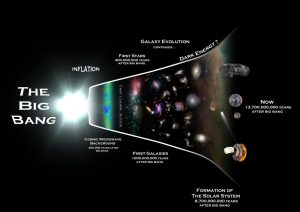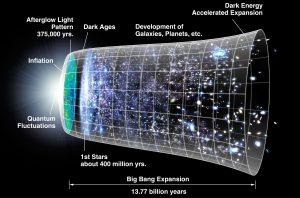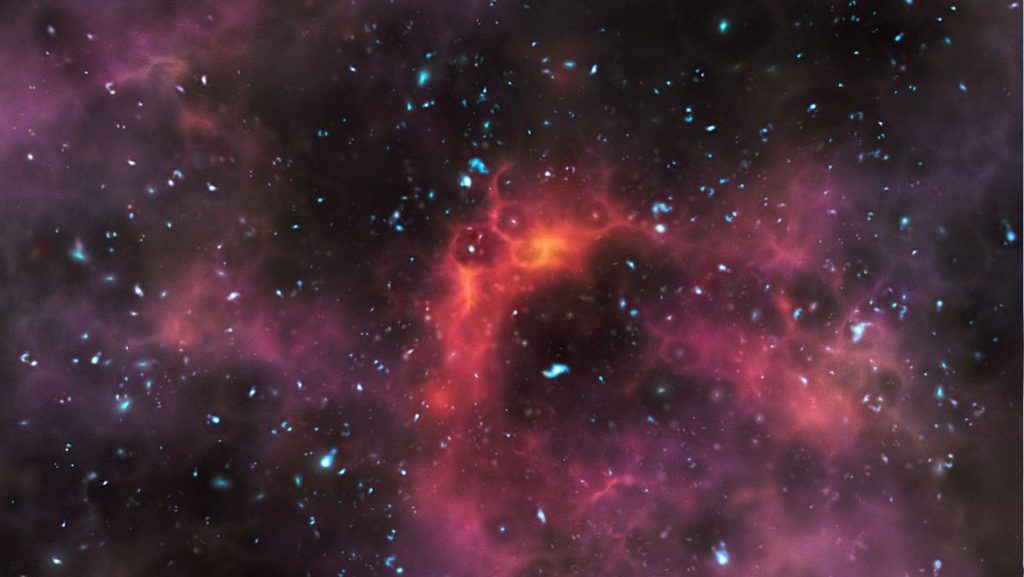The Big Bang Theory – How the Universe Began
The question of how the universe began has fascinated scientists, philosophers, and thinkers for centuries. Among the many theories proposed to explain the origin of the cosmos, the Big Bang Theory stands out as the most widely accepted scientific explanation. It suggests that the universe originated from an incredibly dense and hot singularity approximately 13.8 billion years ago, and has been expanding ever since.
What is the Big Bang Theory?
The Big Bang Theory is a cosmological model that explains the observable universe’s origin and evolution. According to this theory, all matter, energy, space, and even time itself were once compressed into a single point of infinite density and temperature. This point is called a singularity. For reasons not yet fully understood, this singularity began to expand rapidly in an event we now call the Big Bang.
It’s important to note that the Big Bang was not an explosion in space—it was an expansion of space itself. In the earliest moments after the Big Bang, the universe expanded at an unimaginable rate in what’s known as cosmic inflation.
The Early Universe
The first seconds after the Big Bang were incredibly chaotic. Temperatures were trillions of degrees, and particles existed in a hot soup called a quark-gluon plasma. During this time, fundamental forces such as gravity, electromagnetism, and the nuclear forces began to separate from one unified force.
As the universe continued to cool, subatomic particles like protons and neutrons began to form. Within minutes, these particles fused together to create the first nuclei in a process called Big Bang nucleosynthesis. However, it took about 380,000 years for the universe to cool enough for atoms to form. This period is called recombination, and it marks the moment when the universe became transparent, allowing light to travel freely for the first time. This ancient light is still observable today and is known as the Cosmic Microwave Background (CMB).
Evidence Supporting the Big Bang Theory
The Big Bang Theory is supported by multiple key observations and pieces of evidence:
1. Cosmic Microwave Background Radiation
In 1965, scientists Arno Penzias and Robert Wilson accidentally discovered a faint microwave signal coming from every direction in the sky. This signal, the CMB, is a remnant of the radiation released during the recombination era. It serves as a snapshot of the infant universe and provides strong evidence for the Big Bang.
2. The Expansion of the Universe
In the 1920s, astronomer Edwin Hubble observed that distant galaxies were moving away from us, and the farther they were, the faster they seemed to be moving. This discovery showed that the universe is expanding, which implies that it must have been smaller, denser, and hotter in the past—a key prediction of the Big Bang Theory.
3. Abundance of Light Elements
The Big Bang Theory predicts specific ratios of light elements, such as hydrogen, helium, and lithium, formed during nucleosynthesis. Observations of the universe show these elements exist in proportions that closely match theoretical predictions, lending further support to the theory.
What Came Before the Big Bang?
One of the most intriguing and difficult questions in cosmology is: What happened before the Big Bang? The honest scientific answer is that we don’t know for sure. According to general relativity, time itself began with the Big Bang, so asking what happened “before” might not even make sense in the traditional sense.
However, there are several hypotheses:
-
Quantum Gravity Theories, such as loop quantum cosmology, suggest that the universe may have undergone a “bounce” rather than a bang, transitioning from a previous contracting phase to the current expanding one.
-
Multiverse Theories propose that our universe is just one bubble among many in a larger multiverse.
-
String Theory and other advanced models attempt to describe pre-Big Bang physics, but these remain speculative and unproven.
The Role of Dark Matter and Dark Energy
While the Big Bang Theory explains the general structure and evolution of the universe, it doesn’t account for everything. Two of the most mysterious components of the cosmos are dark matter and dark energy.
-
Dark Matter is invisible and does not emit or absorb light, but its gravitational effects are seen in the rotation of galaxies and the behavior of galaxy clusters. It makes up about 27% of the universe.
-
Dark Energy is even more mysterious and is thought to be responsible for the accelerating expansion of the universe. It comprises about 68% of the total energy in the cosmos.
Ordinary matter—the stuff that makes up stars, planets, and us—accounts for less than 5% of the universe.
The Fate of the Universe
The Big Bang Theory not only describes how the universe began but also helps us predict its possible future. Depending on the nature of dark energy and the total mass of the universe, several scenarios are possible:
-
The Big Freeze – If expansion continues forever, the universe will gradually cool down and become dark, cold, and lifeless.
-
The Big Crunch – If gravity eventually overcomes expansion, the universe might collapse back into a singularity.
-
The Big Rip – If dark energy becomes increasingly strong, it could tear galaxies, stars, planets, and even atoms apart.
Current evidence suggests that the universe is headed toward a Big Freeze, with expansion continuing indefinitely.
Misconceptions About the Big Bang
There are several common misconceptions about the Big Bang:
-
It was not an explosion in space, but rather an expansion of space itself.
-
The Big Bang did not occur at a specific point in space. It happened everywhere at once because space itself was compressed.
-
It’s not a theory about the origin of the universe from “nothing.” It describes how the universe evolved from an early hot and dense state. What came “before” is still an open question.
Conclusion
The Big Bang Theory is the best scientific explanation we have for how the universe began. It’s supported by a wealth of observational evidence and forms the foundation of modern cosmology. While many questions remain—especially regarding what came before the Big Bang and the true nature of dark matter and dark energy—this theory provides a powerful framework for understanding our cosmic origins.
As technology improves and new discoveries are made, we may come closer to unraveling the mysteries of the universe’s birth. But for now, the Big Bang Theory remains a monumental achievement in human understanding—a story of how everything we know came to be, from a singular moment of infinite potential.




















